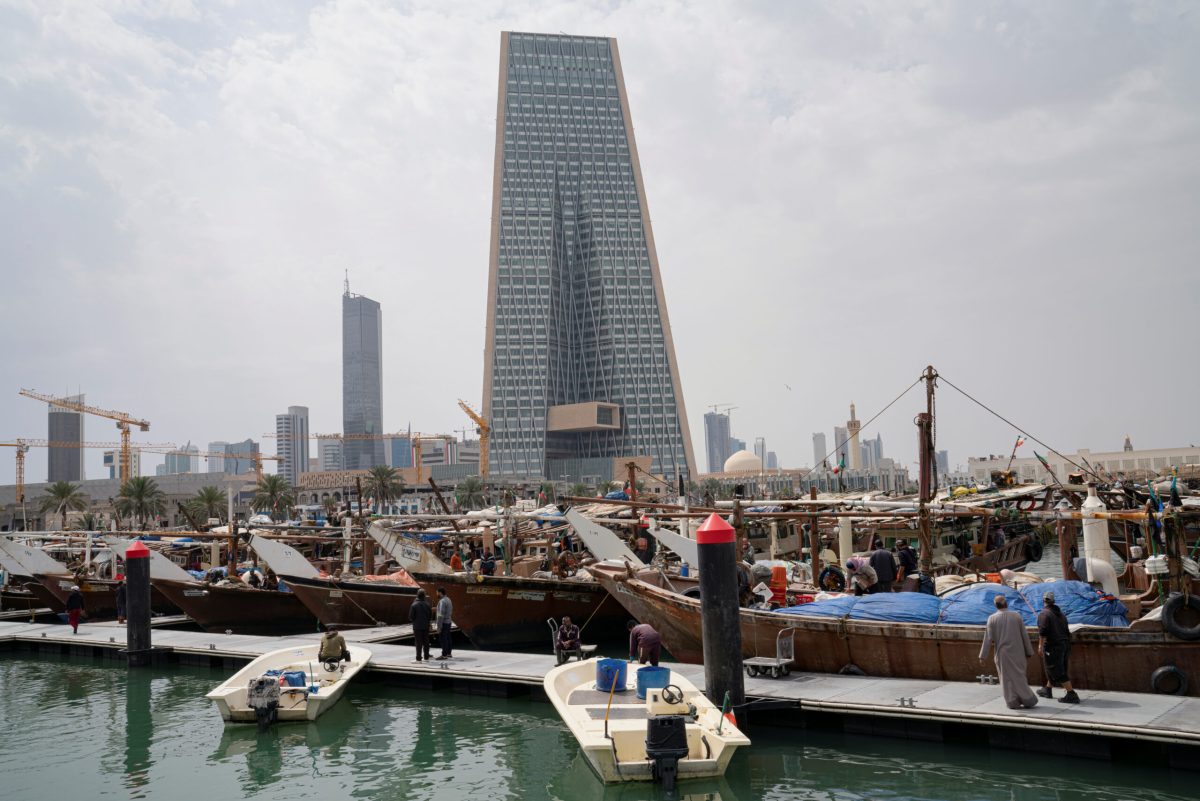
Central bank transparency focuses on the flow and accessibility of information so the public and markets are informed in an accurate, timely manner about the decisions made to achieve a central bank’s goals and the broader economic and financial developments that shaped such decision making. Transparency matters because it increases the trust of the public and markets, thereby making policy announcements more credible and policy decisions more predictable and more effective as a result of more accurate expectations by well-informed expectations of economic agents.
The currencies of Gulf Arab states are pegged to the dollar, limiting in significant ways the room for maneuver in central banks’ decision making, as their interest rates need to follow the decisions of the U.S. Federal Reserve. Transparency remains important nonetheless to these banks’ broader governance and accountability framework as well as to their independence from political interference. And conversely, lack of transparency can lead to uncertainty about the ability of Gulf monetary authorities to continue defending the peg, which may encourage speculation and eventually the collapse of the fixed exchange rate regime.
Transparency Performance in the Gulf States
For years, the International Journal of Central Banking has published the “Central Bank Transparency and Independence Index,” which evaluates central bank transparency with scores between 0 and 15. The most recent version, published in 2022, focused on monetary policy transparency, with updated yearly country scores from 1998-2019.
The Gulf states’ overall transparency indexes were very low in 1998, ranging from 1.5 in Kuwait and 2.5 in the United Arab Emirates to 3.5 in Oman, Qatar, and Saudi Arabia and 4.5 in Bahrain. One reason may be that the Gulf central banks do not need much transparency, as their main target is to continuously defend the fixed exchange rate of their currencies to the dollar (so-called exchange rate targeters), which makes them unique even among oil exporters (Norway, as an example, adopts a free-floating exchange rate regime). The authors of the index argue that “exchange rate targeters feel less urgency about improving their information disclosure, perhaps because their monetary policy is automatically adjusted to maintain the exchange rate target, the achievement of which is easily observable.” But this is not a solid argument because it overlooks the importance of transparency for policy credibility and effectiveness. Moreover, some exchange rate targeters had much higher transparency scores in 1998 than the Gulf Arab states, such as Denmark (7 out of 15) and Hong Kong (5.5 out of 15), which points to transparency issues in Gulf central banks that can’t be fully explained by their currencies being pegged to the U.S. dollar.
Over the years, the Gulf states’ overall transparency scores improved little between 1998 and 2019. In 2019, Saudi Arabia achieved the highest score of 5.5, due to reforms the kingdom implemented under pressure as a member of the G20. However, Saudi Arabia’s score remained well below the scores of the National Bank of Denmark (8) and the Hong Kong Monetary Authority (8.5) that year.
Overall transparency ratings are calculated by evaluating performance on five issues with scores between 0 and 3. The first, political transparency, measures openness about central bank policy objectives. Bahrain received a full score of 3 out of 3 in 2019, compared to 1.5 for Kuwait and Qatar, 2 for the UAE, and 2.5 for Oman and Saudi Arabia (Denmark and Hong Kong also scored 2.5). The relatively high political transparency scores of Gulf central banks related to policy objectives could be because their main policy objective is clearly stated (maintaining the fixed exchange rate of the local currency to the U.S. dollar) and well quantified (e.g., 3.75 Saudi riyals per U.S. dollar). Nonetheless, Gulf states could have increased their overall scores for political transparency by being more explicit about their central banks’ independence – for example, by clearly writing it out in their central bank laws – and the type of institutional arrangement between the bank and government to achieve stated objectives.
The next component, economic transparency, measures transparency about the economic information used to develop monetary policy. For economic transparency, all Gulf states scored 0 except for the UAE (0.5), compared to 2 for both Denmark and Hong Kong. These particularly low scores are because relevant central bank data (e.g., quarterly unemployment and capacity utilization rates) is not available and forecasts are rarely made public, including the methodology (the macroeconomic model) used.
For procedural transparency – which concerns decision making, including openness about banks’ monetary policy frameworks and policy deliberations – Bahrain, Saudi Arabia, and the UAE all scored 1, while the other Gulf states scored 0. The low scores are due to the central banks’ failure to publish accounts of their deliberations. Press releases following the board of directors’ meetings, for example, are limited to announcements of the decisions without further explanations, and no minutes are published after that.
Next is policy transparency: the prompt disclosure of policy decisions, with clear explanations of the rationale and an indication of likely future policy actions. Kuwait scored 1.5 and Saudi Arabia scored 1, while the other Gulf states scored 0, compared to 1.5 for Denmark and 1 for Hong Kong. The low scores may be because exchange rate targeters do not need to change instruments very often and future actions are generally dictated by the central bank of the anchor currency. Nevertheless, Gulf monetary authorities could improve their performance particularly by explicitly communicating their likely future policy orientations and the use of other instruments, such as macrofinancial tools.
Last, operational transparency evaluates openness about challenges in policy implementation. Saudi Arabia ranked first among Gulf states in operational transparency with a score of 2, followed by Oman and the UAE with 1.5, Bahrain and Qatar with 1, and Kuwait with 0, compared to 1 for Hong Kong and 1.5 for Denmark. The Gulf states’ main shortcoming was their lack of analysis of the outcomes of unexpected macroeconomic shocks. Saudi Arabia scored higher on this component (even better than Hong Kong and Denmark) thanks to persuasive explanations of policy challenges provided in its regular reports on issues such as inflation, economic developments, and financial stability.
Priority Reforms
Central Bank transparency should be on the top of the reform agenda in the Gulf Arab states, since it will require other stakeholders to improve their statistics collection, processing, and publication, with wider implications on investor confidence (including attracting foreign direct investment) and the economy at large. More specifically, informing markets and the public about monetary policy actions and their expected impact has always been a main responsibility of monetary authorities.
The importance of transparency increased further after the global financial crisis. As a result, the International Monetary Fund started asking authorities to provide more data in a timely manner. This translated into legal requirements, with countries improving the quality of statistics and monetary authorities adding financial stability among their core objectives in central bank laws, which reinforced data and analysis requirements. Therefore, if Gulf central banks aim to close the gap with their peers, they should prioritize the timely and accurate provision of key missing quarterly statistics, such as data on job markets, the economic output gap, the equilibrium exchange rate, and fiscal data. This will require capacity building and coordination with stakeholders, such as national statistics authorities and ministries of labor. Moreover, data should be calculated using the appropriate methodology (e.g., International Monetary Fund manuals), thoroughly checked for accuracy, and published in a timely manner.
Gulf central banks will also have to explain technical issues to increase their transparency. Bahrain, for example, got a full score in political transparency thanks to its publication of its monetary policy framework, the rationale for its currency peg regime, and the expected stability outcome of the fixed exchange rate arrangement of the Bahraini dinar to the dollar. Other Gulf central banks can look to Bahrain as a model and provide a clear, timely picture of these issues based on macroeconomic models of policy simulations and forecasting and developed with technical assistance from the Arab Monetary Fund and IMF. Similarly, they can improve transparency by quickly announcing policy decisions and providing information on related deliberations, the time frame, and expected outcomes. Minutes of board of directors and other standing committee meetings should be published within three weeks to get maximum transparency scores.
Finally, Gulf central banks can bolster transparency by informing the public and markets about the future orientation of monetary and exchange rate policies. Even though such forward guidance is generally associated with inflation targeting, exchange rate peggers, such as the Gulf states, still need to regularly renew their commitment to the peg regime and, therefore, the policy orientation of the anchor currency (the U.S. Federal Reserve) and disclose their foreign currency position on a regular basis. The “foreign currency cover” – a required ratio of official foreign currency reserves to the monetary base, or money in circulation – should be clearly stated in Gulf states’ central bank laws with a clear definition of the numerator and denominator, and related data should be published monthly to support the credibility of their commitment to the peg.
Putting the Pieces Together
Improving the transparency positions of Gulf central banks will require monetary authorities to urgently adopt credible reform agendas focused on the publication of accurate statistics, disclosure of analysis and forecasting methodology, and forward-looking explanations of policy decisions. Implementation can be enhanced with technical assistance from regional and international institutions and successful peers, especially exchange rate targeters, such as the National Bank of Denmark and Hong Kong Monetary Authority, which share similar concerns and constraints. Related issues, such as central bank governance and independence, can be part of the same reform strategy, which should be launched within a short time frame to limit delays and the risk of reform reversal. Moreover, central banks can benefit from IMF reviews of transparency practices to identify and address gaps.
These reforms will spill over on stakeholders, such as the finance authorities and the national statistics bureaus, to improve their data coverage and disclosure, which will strengthen investor confidence, further attract foreign direct investment, and enhance Gulf countries’ credit ratings and their access to international capital markets. Finally, this will constitute a milestone in their long-term visions of diversification away from hydrocarbons and the buildup of a knowledge-based and sustainable economy.





